In 711 AD Tariq ibn Ziyad with a Berber army landed in Hispania, an event known as the Moorish Invasion
By Nick Nutter | Updated 18 Mar 2022 | Andalucia | History |
Login to add to YOUR Favourites or Read Later
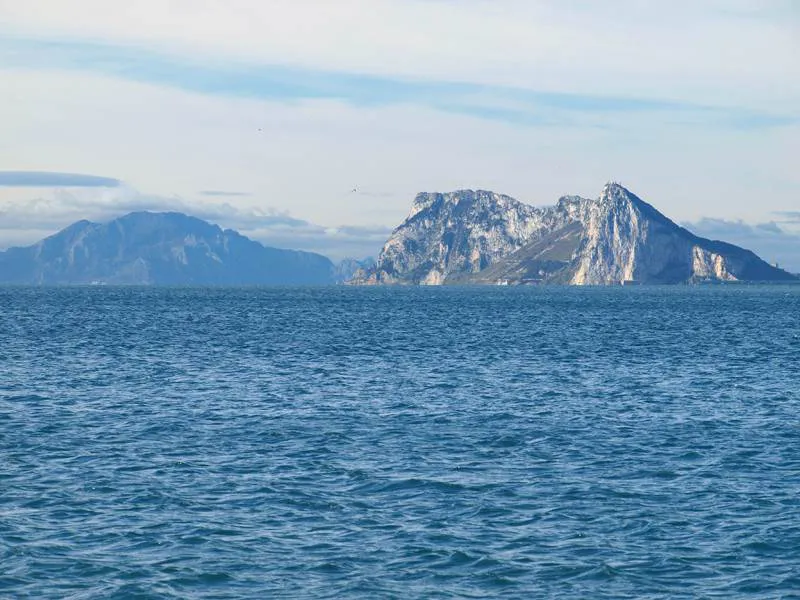
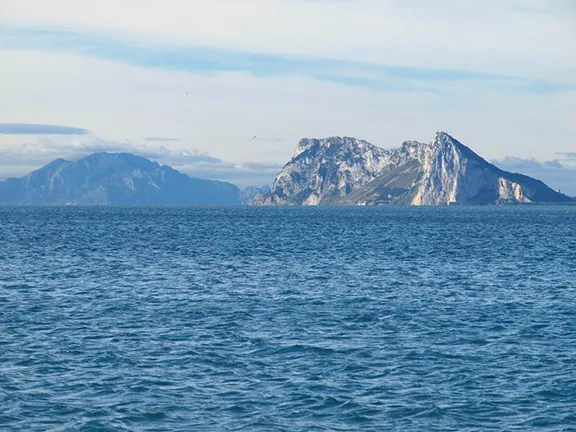
Mons Calpe with Ceuta in background
The year 711 AD is writ large in Spanish history. It is the year Tariq ibn Ziyad crossed the Straits of Gibraltar with a small Amazigh (self-name of Berbers who lived in scattered communities across Morocco, Algeria, Tunisia, Libya, Egypt, Mali, Niger, and Mauritania) army, defeated the Visigothic King Roderick, and thereby opened the doors for a swift conquest of most of the Iberian Peninsula that would then be ruled by the Muslims until they were finally ejected in 1492. That is the simple version. In reality, the seeds of the invasion and occupation were sown over one hundred years previously in two widely separated countries.Romans and Visigoths and known to the Muslim world as such. Some authors prefer to use the term 'Iberian Peninsula' to describe the same territory. Once occupied, Hispania became known as al-Andalus. The Muslim Invasion of Hispania therefore accurately describes the events of 711 AD.
The events that occurred in 711 AD are also confused by the miscellany of names applied to them. Some authors refer to ‘The Moorish Invasion’. Tariq was a Moor, i.e. from Mauretania, but the majority of his army was Berber who are indigenous to Morocco, Algeria, Tunisia, Libya, Mauretania, parts of Mali and Niger and western Egypt. They speak a common Berber language and were renowned fighters. The invasion, was ordered by Tariq’s superior, Musa ibn Nusayr, an Arab general and Umayyad governor of North Africa so was it an ‘Umayyad Invasion’? The one thing all the participants had in common was they all practiced a branch of the Islamic faith. They were all therefore Muslims.
The country the Muslims invaded was called Hispania by the Romans and Visigoths and known to the Muslim world as such. Some authors prefer to use the term ‘Iberian Peninsula’ to describe the same territory. Once occupied, Hispania became known as al-Andalus. The Muslim Invasion of Hispania therefore accurately describes the events of 711 AD.
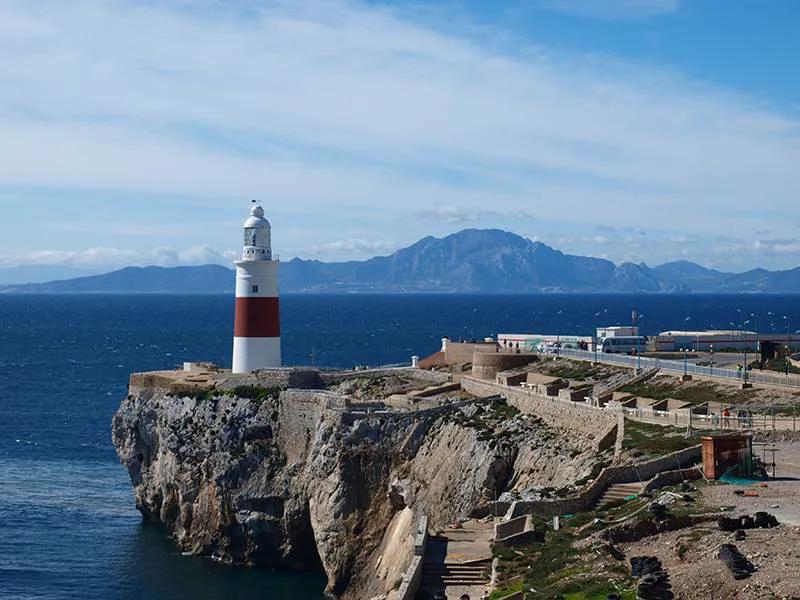
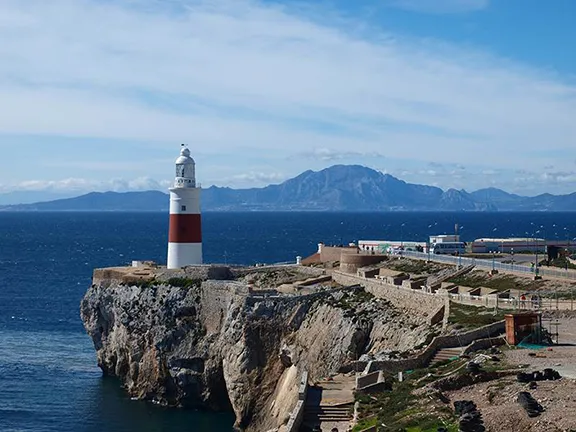
Gibraltar south to Ceuta
In 587 AD, the Iberian Peninsula was finally unified under the rule of the Visigoths 180 years after the Romans departed. The newly crowned king, Reccared, converted from Arian to Chalcedonian Christianity, causing some unrest amongst the Arians. The third Council of Toledo (589 AD) not only proclaimed Roman Christianity (later known as Catholicism) as the official religion in Visigothic Spain, it went much further. Arian bishops, priests and deacons that had converted to Catholicism were prohibited from living with their wives. Arian churches were transferred to Catholic bishops. Most telling were the restrictions placed on Jews who, until this time, were prosperous merchants, traders, and money lenders. Henceforth, Jews were forbidden to have Christian wives, concubines, or slaves and any children of such unions were to be baptized. Jews were disqualified from any office in which they might have to punish Christians. Christian slaves whom they had circumcised, or made to share in their rites, were ipso facto freed.
The proscriptions against Jews were soon followed by required conversions, which led to a wholesale flight of Jews from Visigothic Hispania to Ceuta and territories in North Africa that were only nominally held by the Visigoths. There a community of exiles and malcontents formed that were later to provide useful alliance and information at the time of the Moorish invasion in 711.
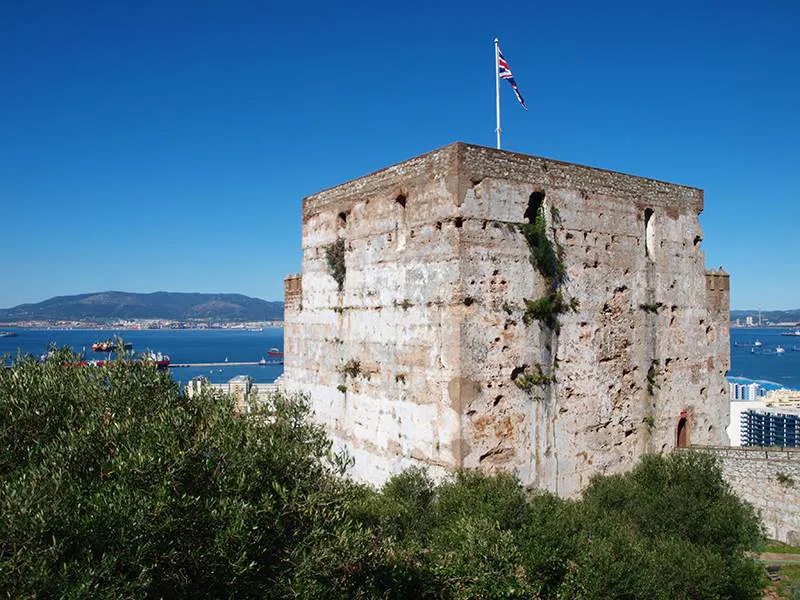
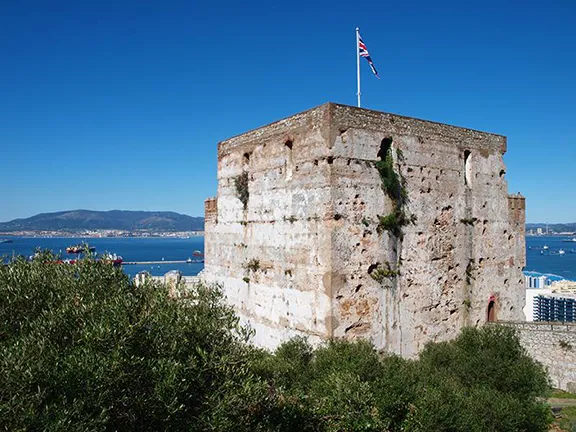
Homage Tower Gibraltar
In 610 AD, a little known prophet called Muhammed began preaching the faith of Islam in Arabia attracting followers called Muslims. Muhammed stressed the new faith’s connections with Judaism and Christianity conveyed through the messages of the Qur'an.
In 622 AD, Muhammed established control in Medina and rallied many Arab tribes to his cause. Between then and his death in 632 AD, Islam was established throughout Arabia. A series of caliphs were chosen as leaders and, over the next ten years Muslim armies extended their rule north and then decisively defeated Byzantine troops in Palestine and Sasanid forces in Iraq.
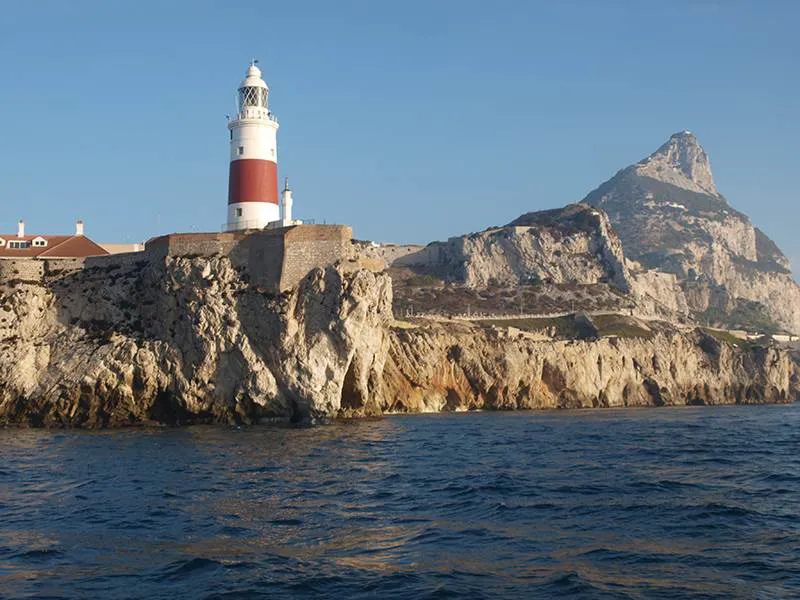
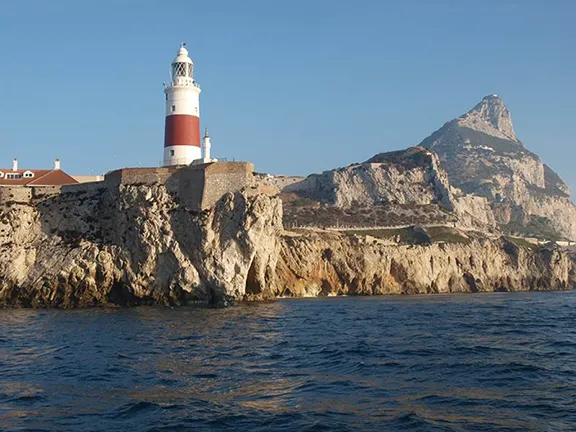
Gibraltar from the south
In 654 AD, the Visigothic king, Recceswinth, issued the Forum Judicum, a comprehensive law code known as the Visigothic Code, dealing with marriage, business transactions, crimes, and heresy. The Visigothic Code was a series of books, each book dealing with a different subject. Book XII was entitled ‘Concerning the Prevention of Official Oppression, and the Thorough Extinction of Heretical Sects’ and contained three titles. Title I read ‘Concerning the Exercise of Moderation in Judicial Decisions, and the Avoiding of Oppression by Those Invested with Authority’, Title II, ‘Concerning the Eradication of the Errors of all Heretics and Jews’ and Title III read ‘Concerning New Laws against the Jews, in which Old Ones are Confirmed, and New Ones are Added’. The code stipulated harsh punishments and imposed ever more severe restrictions on the activities of Iberian Jews and other heretics. Disaffected Jewish migrants again made their way to North Africa that was, by this time, part of the Byzantine Empire.
The Code was the first law code that applied equally to the conquering Goths and the general population, of which the majority had Roman roots, and had lived under Roman laws. Whilst it attempted to unify the Visigothic kingdom it served to emphasise the power struggle between church, nobles and kings and between the established romani population and the gothi invaders. The Visigothic rule in Spain became increasingly unstable with factions on all sides vying for power.
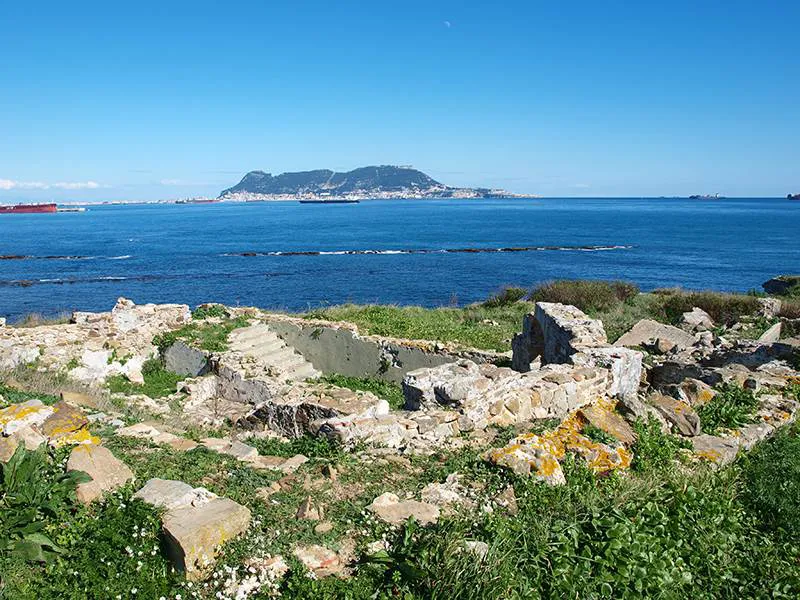
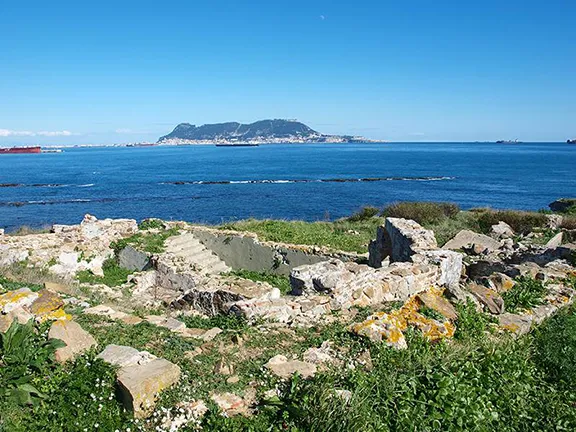
Gibraltar from the west
Meanwhile, in 661 AD, back in the Middle East, Muawiya, a Meccan elite and companion of Muhammad, became the caliph and founded the Umayyad dynasty in Damascus and ushered in a period of Muslim expansion that would eventually cover Anatolia, Central Asia eastwards to the borders of India and west across North Africa. The Byzantine strongholds in North Africa fell to the Muslims one by one. Carthage fell in 698 AD and in 705 al-Walid I, the sixth caliph of the Umayyad dynasty, appointed Musa ibn Nusayr governor in the west.
Musa annexed all of North Africa as far as Tangier and made progress in the difficult task of propagating Islam among the Berbers. The Christian ruler of Ceuta, Count Julian (variously identified by the Arab chroniclers as a Byzantine, a native Berber, or a Visigoth), eventually reached an agreement with Musa to launch a joint invasion of the Iberian Peninsula.
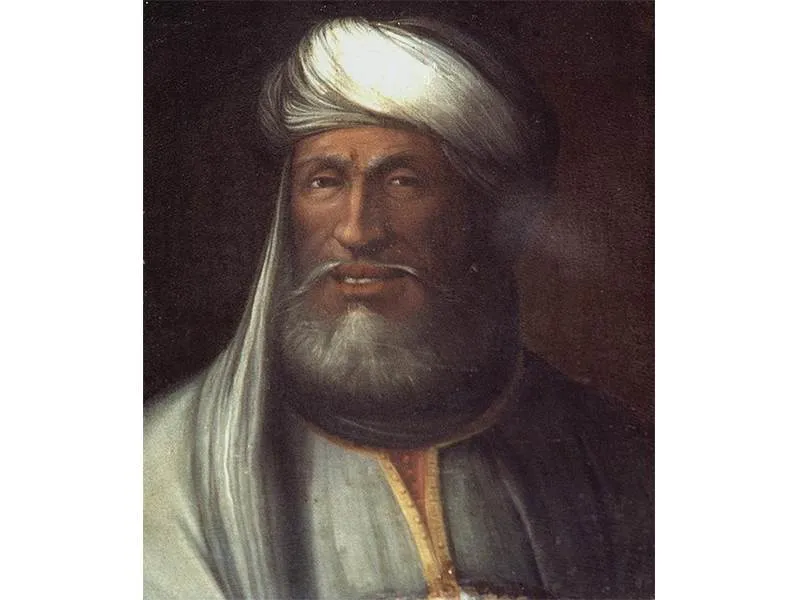
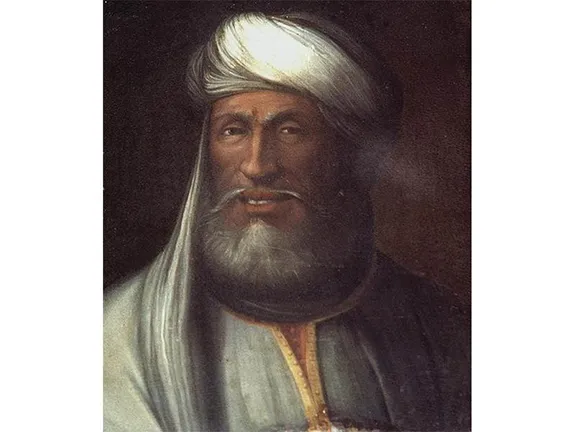
Tariq ibn Ziyad
There are some accounts, notably by two Muslim historians, Muhammad ibn Jarir al-Tabari and Ibn Kathir that the Muslims invaded the Iberian Peninsula some 60 years earlier during the caliphate of Uthman (between 650 and 651 AD). During this period, the Muslims had failed to take the Byzantine capital of Constantinople. Uthman apparently wanted to take Constantinople via the backdoor, from the west, starting in Spain. Whether wishful thinking or an exaggerated view of the success of minor incursions made in coastal areas by the disaffected refugees from Visigothic oppression and other raiders we shall never know since there is no account of the actual invasion.
The invasion of 711 AD is better recorded, although the reasons for it vary; from a call to aid from the ‘Witizans’, one of the waring Visigothic factions opposing the usurper King Roderick, to revenge for Roderick’s alleged rape of Florinda, Julian’s daughter.
Some authors see the invasion as an opportunity grasped at the right time in that the initial ‘invasion’ was one of the regular coastal raids. After the raiders landed, they discovered the territory to be undefended and any defence badly organised due to the constant rivalry between the various Visigoth factions. Tariq sent word back to Ceuta and reinforcements arrived that allowed him to defeat Roderick. There are some accounts that Tariq’s forces were in Hispania up to a year before the Battle of Guadalette. In any case, an expansion of Muslim territory into Europe would have been seen as advantageous by Musa ibn Nusayr and his Umayyad masters back in Damascus.
What is reasonably clear is that Tariq ibn Ziyad’s forces, mainly Berbers, were more the size of a large raiding party than an invasion force. Accounts vary from a force of 1,700 men to 12,000. What is not in dispute is that Tariq transported them across the Straits of Gibraltar in a motley collection of cargo boats over a few days. The Visigoths did not notice the incursion; presumably, there was an established healthy trade across the Straits that provided cover for Tariq and his men.
After the conquest of Tangiers in 705 AD, coastal raids, sporadic before then, had become quite frequent. The inhabitants of the threatened coastal towns would disperse into the mountains and wait for the raiders to go away. There is some suggestion that this is what occurred when Tariq arrived offshore, allowing him to land unopposed.
Tradition has Tariq landing at Gibraltar (then called Mons Calpe) in April or May 711, although this is not the logical place to disembark being isolated and with a rocky coast. It is more likely that he landed within sight of the Rock, in Algeciras Bay or on the Mediterranean coast north of Gibraltar. The Rock does however provide an excellent location for a watchtower, the building of which may account for the non-verified accounts of a fortification built at the time of the invasion. There is no archaeological evidence for a Muslim presence on Gibraltar until the 11th century AD. It is likely that the name Gibraltar came from a Spanish corruption of the name bestowed upon it by the Moors, Jaba-i Tariq, Tariq’s Mountain.
At the time Tariq was assembling his forces near Gibraltar, Roderick was in the north of Hispania, fighting the Basques. When he heard of the landing he marched south. There were a series of skirmishes in the vicinity of the La Janda, a low lying marshy area between the Rio Barbate and the Rio Guadalette but it was not until the 19th July 711 that the two forces met close to the Guadalette River, probably in the vicinity of Medina Sidonia. Roderick’s army was tired from the long march, even so with a force said to be ten times that of the Muslim army, he should have been victorious. There is an apocryphal story that Tariq had literally burnt his boats, thus preventing an easy return to Ceuta, that may have incentivised his troops. There are also unconfirmed stories that some of the nobles in Roderick’s army abandoned him on the battlefield. In any case, victory went to the Muslims and Roderick was killed.
Tariq sent word back to Musa ibn Nusayr about his easy victory and then marched north to Toledo where he overwintered. The Visigoths were so badly disorganised and in dispute with each other that they could not organise any effective resistance. In 712 AD Musa ibn Nusayr brought his own army into Spain and conquered Merida after a long siege. He joined Tariq at Toledo in the summer of 713 AD and the two armies went first northeast and then west. By 714 AD most of the Iberian Peninsula was under Muslim control.
During the Roman Empire, Córdoba served as a provincial capital. The city maintained its importance during the Visigothic era. After the Muslim conquest of Iberia between 711 and 714 AD, the Umayyad emirs (leaders) established Córdoba as the capital of Al-Andalus.
The rapid success of the Islamic forces can be explained by the fact that Hispano-Visigoth society had not yet succeeded in achieving a compact and homogeneous integration. The Jews, harassed by the legal ordinances of Toledo, were particularly hostile toward the Christian government. Moreover, the Muslim conquest brought advantages to many elements of society: the burden of taxes was generally less onerous than it had been in the last years of the Visigoth epoch; serfs who converted to Islam advanced into the category of freedmen and enrolled among the dependents of some conquering noble; and Jews, who were no longer persecuted, were placed on an equal footing with the Hispano-Romans and Goths who still remained within the Christian fold.
In the first half of the 8th century, a new society developed in Muslim Spain. The Arabs were the ruling element. A distinction was made between baladiyyun (Arabs who had entered Spain in 712 under Musa) and Syrians (who arrived in 740 under Balj ibn Bishr). Below them in status were the Imazighen, who made up the majority of the invading troops, whose numbers and influence continued to grow over the course of centuries because of their steady influx from Africa. Then came the native population who had converted to Islam, the musalimah, and their descendants, the muwallads; many of them were also mawali (connected by patronage with an Arab) or even themselves of Berber lineage. This group formed most of the population because during the first three centuries social and economic motives induced a considerable number of natives to convert to Islam. Christians and Jews who kept their religion came next in the social hierarchy, but their numbers decreased over time. Finally, there was a small group of slaves (Saqalibah), captives from the northern peninsula and other European countries and black captives or mercenaries.
Further reading and references